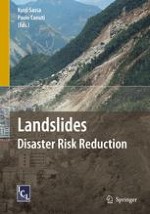2009 | OriginalPaper | Buchkapitel
Education, Capacity Building and Public Awareness for Disaster Reduction
verfasst von : Rajib Shaw, Yukiko Takeuchi, Badaoui Rouhban
Erschienen in: Landslides – Disaster Risk Reduction
Verlag: Springer Berlin Heidelberg
Aktivieren Sie unsere intelligente Suche, um passende Fachinhalte oder Patente zu finden.
Wählen Sie Textabschnitte aus um mit Künstlicher Intelligenz passenden Patente zu finden. powered by
Markieren Sie Textabschnitte, um KI-gestützt weitere passende Inhalte zu finden. powered by
Education is the key element for reducing disasters caused by natural hazards including landslides and achieving human security in the pursuit of sustainable development. The Hyogo Framework for Action 2005–2015 and “Words Into Action: A Guide for Implementing the Hyogo Framework” prepared by UN/ISDR emphasize the role of formal and non-formal education and awareness raising as a core component of risk reduction initiatives.
Past experience, projects, and programs have revealed enormously positive effects of education for vulnerability reduction and disaster risk management. Children and adults who know how to react in case of a disaster, community leaders who have learned to warn their people in time, and whole social layers who have been taught how to prepare themselves for natural hazards have contributed to better mitigation strategies and dissemination of information on the dangers of hazards. Education and knowledge have provided people with tools for vulnerability reduction and life-improving self-help strategies. Furthermore, more stable and disaster resilient education facilities, such as school buildings, provide a shelter in case of hazards and must be strengthened and improved through better engineering and technical knowledge.
Education also plays a substantial role in improving risk assessment procedures in nearby communities, in encouraging people to engage in building up resiliency and to generally reduce risk elements in communities. For education on risk reduction to have its desired impact on communities, it needs to reach out to the remotest development worker in the field. Such education needs to be made accessible and affordable for frontline practitioners who operate at community level and are often far removed from conventional knowledge centers such as universities.
Thus, while there is no argument that education is important, and it works, the challenge is how to effectively incorporate education for disaster reduction in the national and local government policy and programs, and how to reduce the gap between knowledge and practice through experiencing learning. A pro-active co-learning approach of linking school and formal education to community is the essential for the success of disaster education.
